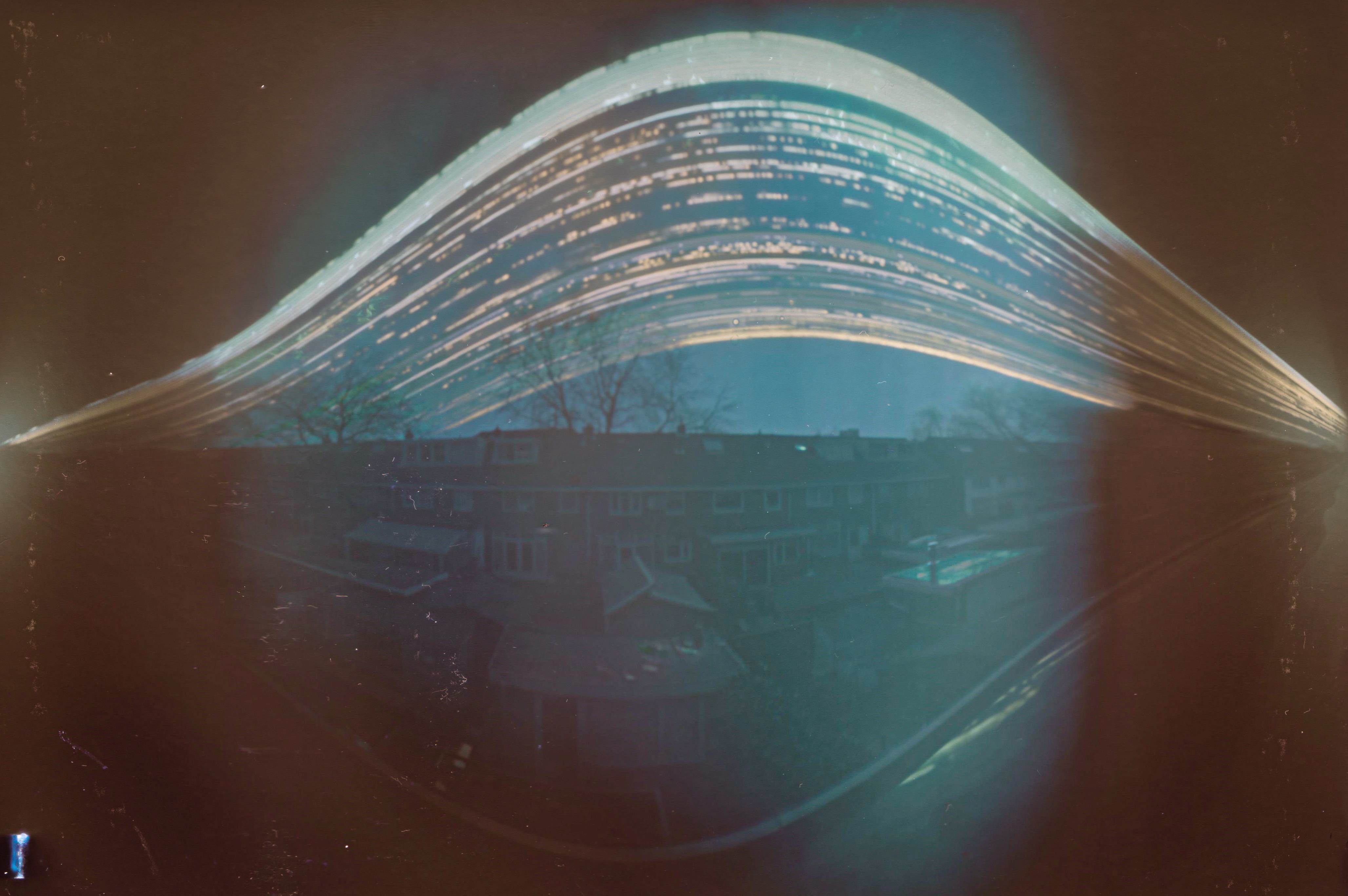
A Solarcan captures the path of the sun during several weeks, months or even a full year. A Solarcan is an ANALOG pinhole camera: it's a can with a tiny hole (0.5mm), through which light falls on a piece of photographic paper. There is no digital camera inside to capture pictures, videos or audio.
The Solarcan will capture the surroundings, but only static elements such as bridges, trees and buildings. Sometimes these details can be quite clear, sometimes they are more vague. It also captures the reflection of light in windows or water. Moving elements will not be captured.
This is an extremely long exposure. Therefore, movements such as people walking by or even people inspecting the Solarcan up close, will NOT be visible in the photograph. Unless you are able to stand in front of it for weeks and not move one bit - which would be quite an achievement!

This gallery shows what a Solarcan looks like. Also it shows what the photographic paper looks like, right after it has been taken out of the can. And the gallery contains two developed images. One of a Solarcan that remained in its position; you can see the vertically stacked paths of the sun. And another image, of a Solarcan that was moved during the exposure; you can see how the paths have slid to the side. It still looks interesting, but this wasn't intentional.
Would you like to make your own Solargraph? Buy a Solarcan here for only (approx.) €17,50!

The Solarcan needs to remain very still. Otherwise, the photograph will turn out blurred. Or the path of the sun will have moved. You can see this in the image below: instead of the paths of the sun being stacked, they have moved to the side. Even the tiniest nudge could change the photograph. This is why Solarcans are usually attached to a static element such as a house, a gate, a tree or a pole. Tie wraps or gaffer tape are great ways to keep the Solarcan in place and prevent it from moving. We ask you kindly not to touch the Solarcan, to ensure that it doesn't move. Thank you in advance!


Why does the sun’s path look like that? As we observe the Sun in the daytime sky we can see that it rises in the east and sets in the west with it being highest around midday. This isn’t because the Sun is moving, it’s because the Earth is spinning. Once every 24 hours. The reason it rises and sets and doesn’t just travel in a straight line through the sky is because Earth is tilted on its axis. 23.5 degrees to be exact. This tilt also happens to be what causes the seasons we have throughout our Earth year. As we travel in Space around the Sun different parts of Earth are exposed to the Sun’s rays more than others, giving us our Summer and Winter. During the hottest season, summer, the Sun is more direct and higher in the sky. Its highest point is during the summer solstice on the 21st June. The lowest point is the winter solstice on the 21st December.

If you have any comments or questions about the Solarcan you found, please fill out the following form: